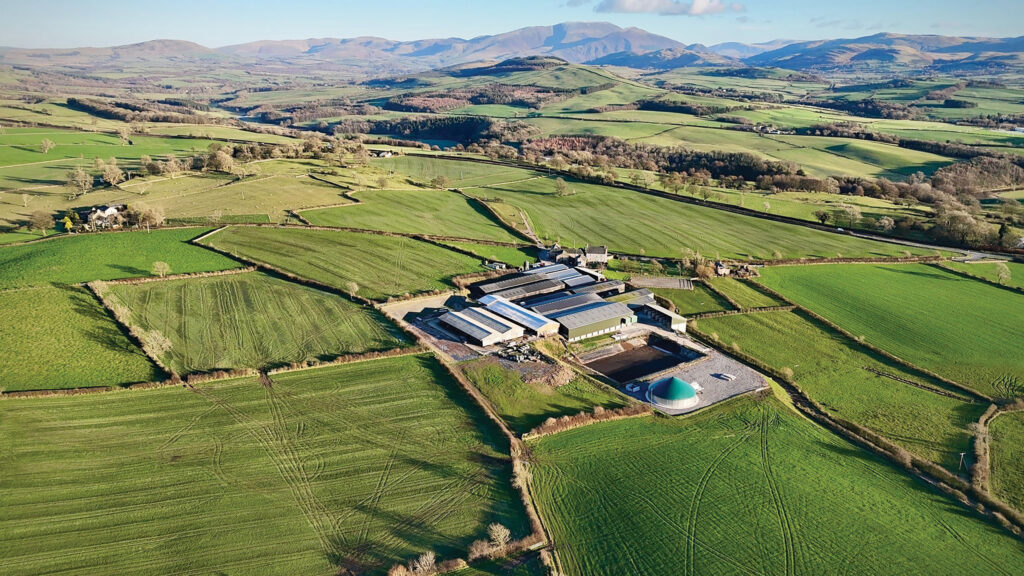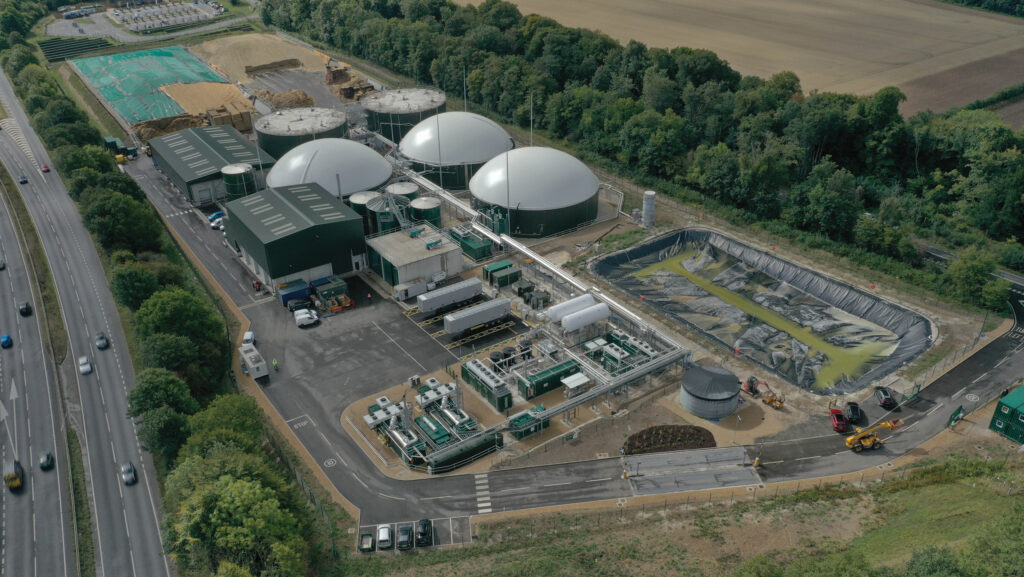Small-scale AD held back by lack of policy support as biomethane grows
 © BioInsights
© BioInsights Small-scale biogas potentially offers many benefits for farmers well beyond energy generation, yet there are concerns that lack of government support or clear policy direction is continuing to hold back this potential.
The latest analysis comes from consultancy Alder BioInsights, formerly the National Non-Food Crops Centre (NNFCC).
Out of the 632 operational anaerobic digestion (AD) plants in the UK, it shows that new building activity is currently concentrated at the larger sites.
The firm’s principal consultant, Lucy Hopwood, says it is predominantly larger-scale, biomethane-to-grid (BtG) plants that are driving current growth of the sector.
See also: How farm-scale AD can offer sustainability and savings
This is aided in no small part by the government’s Green Gas Support Scheme (GGSS).
The scheme provides tariff support for plants producing biomethane via AD, which is then injected into the gas supply network.
Frustration for smaller AD
While such growth is encouraging, and may create some opportunities for farmers close to BtG plants, Lucy remains frustrated that government support is only focused on large-scale plants, with nothing centrally available for small, farmer-led AD.
“Despite the lack of central support, some farmers are still pushing ahead and installing small-scale systems where local support is available, or the commercial case works for them.
“However, they are still few and far between compared to the scale of the opportunity.
Changing economics
Interest in digestate could increase when the Carbon Border Adjustment Mechanism (Cbam) is due to be implemented by the government, from 1 January 2027.
This effectively puts a carbon levy on imported goods to account for the emissions generated in their production.
Although the impact remains unclear, there is some speculation that it could lead to higher fertiliser prices on farm.
And, if that is the case, then more farmers may look to alternative sources of nutrition, such as digestate.
“The government needs to be more supportive of on-farm AD and recognise the wider benefits it can bring with clear, cross-department, policy direction,” she says.
“In the past, AD has only really been looked at from an energy generation perspective, however there are a lot of other benefits, such as capturing fugitive emissions, displacing synthetic fertilisers, saving carbon, managing waste, and other soil, water and air quality benefits.
“If future support was more focused on carbon savings rather than energy generation, for example, then it would create a much more even playing field for supporting small-scale, on-farm systems.”
The government is due to publish a consultation on future policy in the coming months, which should give a clearer direction of how AD might be supported in future, Lucy says.
Positive signs
There are some encouraging signs of a change in attitude towards AD among policymakers though, such as in the last round of Defra’s Capital Grants scheme, which closed in August.
Previously, this has specifically excluded AD, but this latest round included two AD-related measures that could qualify for grant funding – namely, floating and self-supporting covers for slurry and anaerobic digestate stores.
“It’s certainly a step forward, but more change is needed,” says Lucy.
There are some positive steps in the supply chain, too.
The Tesco Sustainable Dairy Group, for example, is offering a milk price premium to farmers implementing carbon reduction strategies on farm, in a similar way to Arla’s FarmAhead scheme.
In January, the Co-op also announced an £860m sustainability fund, rewarding farmers for taking steps to reduce their carbon footprint and improve biodiversity and soil health.
Although AD is not specifically mentioned, a spokesperson says that if farmers are investing in the technology on their farm and it results in carbon reductions, this will be captured and farmers rewarded accordingly.
“There’s still a lack of understanding within the supply chain about the wider benefits of AD.
“So if we can get some clearer policy direction, hopefully that will change, and I still believe there will be big opportunities for farmers,” Lucy adds.
Local opportunity?
There are currently 116 BtG plants operating across the UK, with a further 20 GGSS projects in the development pipeline.
It is estimated that the scheme could support up to 40 new BtG plants before it closes on 31 March 2028, Lucy says.
These multimillion pound, investor-backed BtG projects use a range of feedstocks to generate biomethane, but a key requirement of GGSS funding is that at least 50% of the gas produced must come from waste feedstocks to qualify for the maximum support payment.
In many cases, this includes agricultural wastes and residues, such as manure, poultry litter, and straw. Other feedstocks typically include rotational crops, such as maize or wholecrop hybrid rye.
“AD plant operators have got to meet sustainability criteria, so in most cases, they are looking to procure feedstock materials locally.
UK biogas in numbers
- 632 operational AD plants, of which:
- 433 sites are primarily farm-fed, 199 are waste-fed facilities
- 70% of UK processing residues and 60% of food waste is currently used in AD
- Half of the 2m tonnes of agricultural residues are used in AD
- Only 3% of livestock waste is used in AD
Source: Alder BioInsights Anaerobic Digestion in the UK 12th Annual Report, May 2025
“These plants will be operating for 20-25 years, so developers want to build long-term relationships.
“And there are opportunities for the farming community in these areas,” says Lucy.
In many cases, there will be reciprocal arrangements in place, where farmers receive digestate in return for supplying feedstocks.
“As synthetic fertiliser prices are expected to continue to rise and the value of digestate increases, these deals become very attractive,” she says.
New facilities
One company with big ambitions in the BtG sector is Acorn Bioenergy, which aims to deliver 25% of the UK’s biomethane supply and currently has more than a dozen facilities in development.
The first, at Three Maids, Winchester, Hampshire, became operational in September 2025.
It will process 83,600t of agricultural residues (for example, straw), agri-waste (livestock manures, slurries and poultry litter) and rotational crops annually, to produce more than 120GWh of biomethane a year – enough to meet the heat demand of more than 9,000 homes.

Three Maids site in Winchester © Acorn Bioenergy
Feedstocks are being sourced as locally as possible, says the firm.
Another company, Vida bioenergy, also commissioned its first UK biomethane plant this year, at Glentham in Lincolnshire.
It will produce more than 60GWh of biomethane annually – enough to heat 5,200 homes, from a range of locally sourced agricultural materials, including manure, poultry litter, straw, potato waste and rotational crops.
The company has also started building a similar plant at Wormslade Farm in Northamptonshire, which it hopes to be operational by the third quarter of next year.
Feedstock is to be sourced within a 20-mile radius of the plant.
Feedstock demands
Feedstock supply is one of the biggest challenges for AD, and one big criticism of crop-based biogas plants has been that they require land to be used for growing crops for energy, rather than food.
The most recent Defra figures show that 133,000ha of UK agricultural land was used to grow crops for bioenergy in 2023, equivalent to 2.2% of UK arable land.
Of this, more than half (55%) was maize for anaerobic digestion (AD), while one-third was wheat for biofuel.
Expansion
However, with many plants taking waste as a primary feedstock, and potential to tap into other feedstock sources in the future, Lucy believes the sector can expand without competing directly with food production.
This is especially true if the estimated 1m hectares of land that is left uncropped each year can also be utilised in some way to support waste feedstocks, perhaps by growing a short-season crop, such as rye for AD, she suggests.
Another alternative might be for a change in government policy that allows farmers to harvest the above-ground biomass from cover crops grown within the Sustainable Farming Incentive, for example, and use it as a feedstock for biogas generation.
Diversity of crop options
“Including a more diverse range of crops in the rotation and providing cover and actively growing roots for as much of the year as possible are key regenerative farming principles, which offer evident benefits.
“AD can be a key enabler for this, while also offering farmers more productive and profitable break crop options than they have currently.
There are lots of options, but the whole sector needs to think more holistically about the opportunities AD offers.”
Analysis by Alder BioInsights suggests up to 2m tonnes of agricultural residues are available, yet only half is currently used within AD, and of the 70m tonnes of livestock waste produced across the UK, just 3% is currently being used in AD.
“This highlights a significant untapped opportunity for future feedstock deployment and expansion of the sector.
Slurry
“Processing livestock waste through AD is an obvious route to reducing emissions in agriculture, with fugitive methane from slurry/manure management and storage being a key contributor.
“These emissions are captured during the AD process and converted to useful energy, while nutrients are retained in the digestate,” says Lucy.
“Although some feedstocks work best processed at scale, slurry is best treated on site with the benefits retained on farm.”
It is predicted that there could be enough feedstock available to increase the UK’s annual biomethane production capacity from 7.5TWh currently, to 50TWh by 2030, and 120TWh by 2050.
Net-zero target – another policy driver
The UK has a legally binding target to reach net-zero greenhouse gas emissions by 2050. A key step is producing at least 95% clean power by 2030.
While much of the focus is on solar, wind and nuclear in achieving this, biomethane will also play a part.
Indeed, the government’s Clean Flexibility Roadmap, which was published this summer and outlines a strategy for meeting clean power and net-zero targets, specifically recognises biomethane as playing a role.
Previously, the focus has been on injecting biomethane into the gas grid to help decarbonise domestic heating, but the strategy also outlines its role for inter-seasonal and peak balancing in existing gas turbine power plants..
